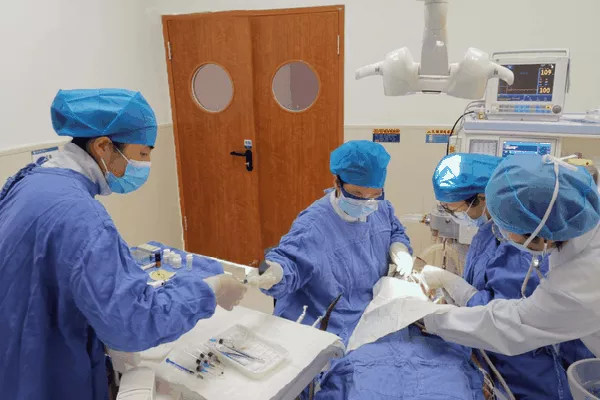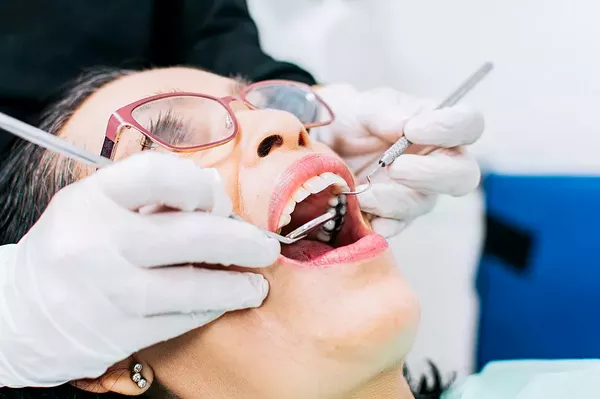A palate expander, also known as a palatal expander, is a common orthodontic device used to correct issues related to a narrow upper jaw or palate. While this appliance is highly effective in creating space and improving bite alignment, it can present some challenges when it comes to eating. However, with a little creativity and consideration, you can still enjoy a well-balanced diet while wearing a palate expander. In this article, we will explore what you can eat with a palate expander, provide tips for meal planning, and discuss how to maintain good oral hygiene during your treatment.
Understanding Palate Expanders
Before we dive into dietary recommendations, let’s briefly understand what a palate expander is and how it works.
A palate expander is an orthodontic device that is typically attached to the upper molars and spans the roof of the mouth (palate). It consists of bands or rings that are secured to the molars and a screw mechanism that runs along the palate. The primary purpose of a palate expander is to gradually widen the upper jaw or palate to correct issues such as dental crowding, a narrow palate, crossbites, and other bite-related problems.
Dietary Considerations with a Palate Expander
Wearing a palate expander can initially make eating a bit more challenging due to the device’s presence in the mouth. Here are some dietary considerations and recommendations to keep in mind:
Soft Foods:
Soft foods are your best friends when you have a palate expander. They are easier to chew and less likely to get caught in the appliance. Examples of soft foods include mashed potatoes, yogurt, pudding, applesauce, and scrambled eggs.
Soups and Broths:
Soups and broths, whether they are vegetable, chicken, or beef-based, are excellent options. They are nutritious, hydrating, and easy to consume.
Smoothies:
Smoothies made with fruits, vegetables, yogurt, and protein sources like peanut butter or protein powder can provide a nutritious and satisfying meal. Just be cautious with seeds or chunky additions that might get caught in the expander.
Pasta and Rice:
Cooked pasta and rice dishes, such as macaroni and cheese or risotto, are soft and easy to eat. Avoid overly sticky sauces that could become problematic.
Casseroles:
Casseroles that combine soft ingredients like cooked vegetables, pasta, and cheese can be a convenient and tasty option.
Seafood:
Soft, flaky fish like tilapia or salmon can be a good source of protein. Just make sure it’s boneless to avoid any potential issues.
Dairy Products:
Dairy products like yogurt, milkshakes, and cheese are not only soft but also rich in calcium, which is essential for dental health.
Cooked Vegetables:
Steamed or boiled vegetables like carrots, broccoli, and cauliflower are soft and easy to chew.
Foods to Avoid or Approach with Caution
While there are plenty of foods you can enjoy with a palate expander, there are certain items you should either avoid or consume with caution:
Hard and Crunchy Foods:
Foods like nuts, popcorn, hard candies, and raw vegetables can be problematic as they may damage or dislodge the expander components.
Sticky or Gummy Foods:
Taffy, caramel, gum, and other sticky or gummy candies can easily get stuck in the expander and should be avoided.
Foods with Small Seeds:
Foods containing small seeds like sesame seeds or poppy seeds can become lodged in the expander, so consume them with caution.
Tough Meats:
Extremely tough cuts of meat can be difficult to chew, so opt for tender cuts or alternative protein sources.
Foods Requiring Excessive Biting or Tearing:
Foods that require substantial biting or tearing, such as corn on the cob or whole apples, can be challenging to eat with a palate expander.
Maintaining Good Oral Hygiene
Proper oral hygiene is essential when you have a palate expander to prevent issues like cavities and gum problems. Here are some tips for maintaining good oral hygiene during your treatment:
Regular Brushing:
Brush your teeth and the expander thoroughly after each meal or snack to remove food particles and prevent plaque buildup. Consider using a soft-bristle toothbrush.
Flossing:
Flossing can be more challenging with an expander, but it’s crucial. Special floss threaders or orthodontic floss can make the process easier.
Rinsing:
Use a mouth rinse recommended by your orthodontist to help maintain oral health and freshen your breath.
Orthodontic Wax:
Orthodontic wax can be applied to any sharp or rough edges of the expander that may irritate your cheeks or tongue.
Orthodontic Check-Ups:
Attend regular orthodontic check-ups to ensure your expander is functioning correctly and to address any issues promptly.
Conclusion
While adjusting to life with a palate expander may present some dietary challenges, it’s entirely possible to enjoy a balanced and nutritious diet. Soft foods, soups, smoothies, and other palate-friendly options can keep you well-fed and satisfied throughout your treatment. Just be mindful of foods to avoid and maintain excellent oral hygiene practices to ensure the success of your orthodontic journey. If you have any questions or concerns about your diet or orthodontic treatment, consult with your orthodontist for personalized guidance and recommendations. Remember, the temporary adjustments you make now will lead to a healthier and more beautiful smile in the future.
Related Topics:






























